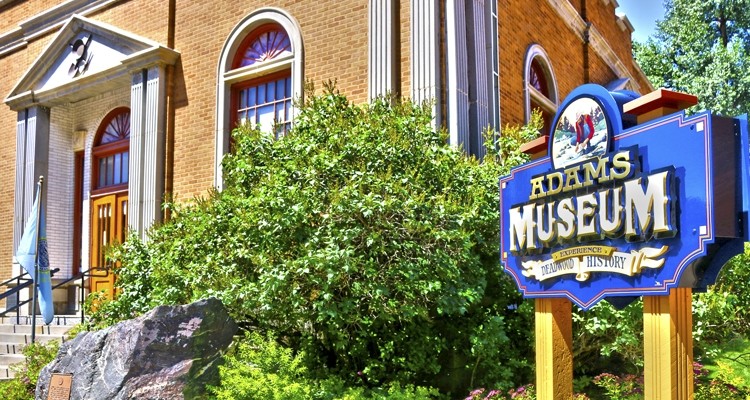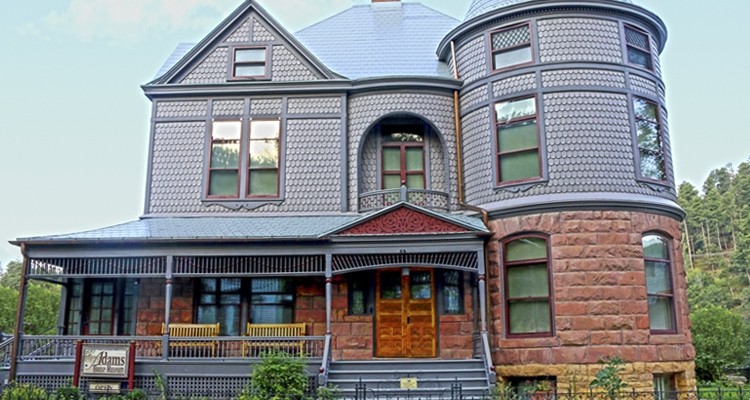Adams Museum
Introduction
Text-to-speech Audio
Images
The Adams museum was built in 1930 and showcases local and regional history.

Built in 1892, the Historic Adams House is fine example of Queen Anne architecture.

Backstory and Context
Text-to-speech Audio
William E. Adams arrived in Deadwood with his brother, Avery, in 1877. They built and opened a grocery store on Main Street they called Banner Grocery. The building burned down in a fire but, undeterred, they built new store. Adams married his wife, Lucile, in 1880 and they had two daughters together. As the business grew, Adams moved his family to a number of increasingly larger homes including this property and their final home built 1892 at 22 Van Buren Street. The elegant, Queen Anne-style home today operates as a house museum and features oak woodwork, stained glass windows, and original furnishings.
Adams built a new store in 1894 that he expanded in the coming years as he transitioned from retail to wholesale. The building grew significantly; it covered a whole city block and was four-stories tall. As a result of his success, Adams became a prominent figure, not only contributing to the economy but, as note above, serving as mayor six times. Wanting to contribute further, Adams decided to build the museum. He also built it in honor of Lucile and his daughters who, sadly, had passed away. The house is also a contributing property of the Deadwood Historic District.
Sources
"About W.E. Adams." Deadwood History, Inc. Accessed November 6, 2019. https://www.deadwoodhistory.com/about-us/about-w-e-adams.html.
Rau, John E. "Deadwood Historic District Amendment." National Park Service - National Register of Historic Places Nomination Form. October 15, 1966.
Deadwood History, Inc.
Deadwood History, Inc.
